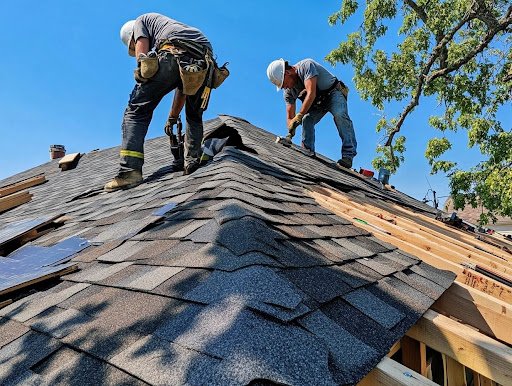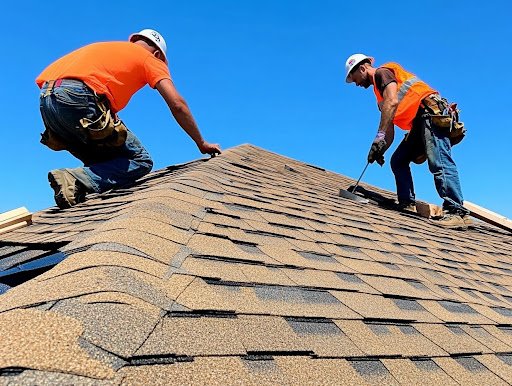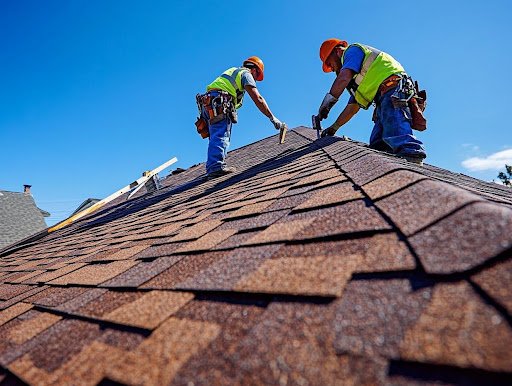How long does roof replacement take?
- Trusted Roofing Professionals Sydney
- Free Quotes Available
- Contact Us Now
Replacing a roof in Sydney, NSW, represents a substantial investment, and having a comprehensive understanding of the entire process can facilitate a much smoother experience. This guide offers essential insights regarding the duration of the project and the various factors that may influence the timeline. It outlines the steps involved, provides guidance on preparing for the replacement, and details what to expect during and after the process. Whether addressing wear and tear or planning for an upgrade, this information will equip individuals with the knowledge necessary to ensure a successful roof replacement.
Key Takeaways:
- Depending on various factors, roof replacement in Sydney, NSW, can take anywhere from a few days to a few weeks.
- The size and complexity of the roof, material availability, weather conditions, and accessibility can all affect the timeline of a roof replacement project.
- Proper preparation, securing permits, and clear communication with your roofing contractor can help ensure a smooth and timely roof replacement process.
Roof Replacement in Sydney, NSW: What You Need to Know
Roof replacement, including roof replacement Melbourne and Brisbane roofing, in Sydney, NSW, is an essential process every homeowner should understand to ensure their residential roof remains safe, functional, and visually appealing.
This intricate undertaking encompasses a variety of roofing materials, including asphalt shingles, metal roofing, tile roofing, slate roofing, and wood shingles, selected according to the home’s specific requirements and the prevailing local weather conditions.
Collaborating with qualified roofing contractors who specialise in roof inspection, restoration, and maintenance can significantly improve the effectiveness and durability of the roofing project, thereby making it a sensible investment in both protection, roofing effectiveness, and energy efficiency.

How Long Does Roof Replacement Usually Take for Complex Roofs?
The duration of a roof replacement project can vary significantly due to several factors, including the roof size, the complexity of the roofing materials, the roofing techniques employed by the contractors, and the contractors’ techniques. Generally, a straightforward residential roof replacement may take a few days to a week; however, this timeline may be extended for larger and more complex roofs.
Factors that Affect the Timeline of Roof Replacement
Several key factors can influence the timeline of a roof replacement project, and understanding these factors can assist homeowners in planning effectively. The size and complexity of the roof, roof accessibility, the choice of roofing materials, prevailing weather conditions during the project, and the accessibility of the roof are all significant elements that determine the efficiency and speed of the work’s completion.
Size and Complexity of the Roof
The size and complexity of a roof are among the most significant factors influencing the duration of a roof replacement project. Larger roofs with intricate designs or multiple pitches require more time for disassembly and replacement than simpler, single-pitched roofs.
In roofing, size, complexity, and intricacy are critical determinants of labour demands. A substantial roof requires more materials and a larger workforce to manage the various tasks involved efficiently. For instance, roofs featuring numerous angles, gables, or chimneys complicate the installation process, resulting in:
- Increased Labour Requirements: A greater number of workers may be essential to ensure safety and efficiency.
- Material Calculations: Complex designs often require custom-cut materials, increasing waste and cost.
- Extended Project Timelines: Each additional feature or dimension can contribute to longer completion times, potentially adding days or weeks to the overall project.
Considering these factors can assist homeowners in understanding the implications for both budgeting and scheduling their roofing projects, including detailed roofing quotes and costs.
Material Availability and Roofing Options
Material availability can significantly impact the timeline of a roof replacement, as certain roofing materials and roofing options may require extended lead times for procurement, particularly in the case of custom or specialty options. This situation can result in delays in the roofing project’s initiation and completion.
The selection of roofing materials is crucial for the structure’s durability and for maintaining a manageable budget.
Available roof types and options generally offer a range of advantages; homeowners may discover that opting for locally sourced or widely manufactured materials can facilitate quicker installations and reduce transportation costs. By considering material availability, individuals can make informed decisions that align with their project timelines, ensuring that their roofing endeavours are executed efficiently. According to a respected source like Deloitte, understanding the complexities of construction supply chain management is critical for streamlining processes and avoiding delays.
- Timelines can be streamlined by selecting commonly used roofing materials.
- Costs can be effectively managed, preventing budget overruns.
- Ultimately, choosing readily available resources allows for a more flexible approach to both design and execution.
Therefore, prioritising material availability is essential for the overall success of any roofing project.
Weather Conditions and Roofing Environment
Weather conditions are critical in determining the timeline for roof replacement projects, as adverse weather can significantly delay the work. Rain, snow, and extreme temperatures affect the safety of roofing contractors and can impede the effectiveness of various roofing techniques and the roofing environment.
Such conditions may necessitate adjustments in planning, labour schedules, and overall project management strategies. For example, roofing activities must often be paused during heavy rainfall to prevent damage to materials and ensure workers’ safety.
- Humidity can affect the drying time of adhesives, leading to potential delays.
- Cold weather can render shingles brittle, increasing the risk of breakage during installation.
- Additional precautions must be implemented to remove snow and ice in snowy conditions before work can commence.
The selection of appropriate materials also becomes crucial; roofing systems designed for superior insulation may prove more effective in regions that experience extreme temperatures. Therefore, understanding and anticipating weather conditions is essential for ensuring the timely and safe execution of roofing projects and maintaining roof longevity.

Accessibility of the Roof and Roofing Equipment
The accessibility of a roof significantly influences the duration of a replacement project. Roofs that are difficult to access may necessitate specialised equipment and additional labour to ensure safety and efficiency. Consequently, this may result in increased costs for the homeowner.
When assessing roof access, several factors must be considered, including roof height, pitch, and the presence of surrounding structures. A steep or elevated roof often requires scaffolding, ladders, or aerial lifts, making safety a paramount concern. Utilising specialised equipment can significantly impact the project timeline, as it typically requires skilled operators to manage the logistics of safely accessing the work area.
Proper planning is essential to minimise delays. Additionally, the team’s experience with unique roof designs can significantly affect overall execution. Adhering to established safety protocols can reduce the risks of accidents, thereby protecting both workers and property.
Ultimately, a thorough evaluation of the roof’s accessibility can streamline the replacement process, ensuring that it proceeds effectively and with minimal interruptions, enhancing the roof restoration process.
Steps in the Roof Replacement Process and Roof Project Planning
Understanding the steps involved in the roof replacement is crucial for homeowners in Sydney, as it offers valuable insight into what to expect throughout the project. This comprehensive process generally comprises several key stages, which are essential for effective roof project planning:
- Initial inspection
- Removal of old roofing materials
- Repair or replacement of any damaged substrates
- Installation of new roofing materials
- Application of finishing touches and tidy-up
Inspection and Assessment with a Licensed Contractor
The initial step in the roof replacement process involves conducting a comprehensive roof inspection and assessment to identify any existing structural damage or issues with the current roofing materials. This evaluation is essential for determining the scope of the roofing project and ensuring the appropriate materials and techniques are utilised during the replacement.
Engaging qualified roofing contractors during this phase not only brings valuable expertise but also provides access to advanced tools and technology that enhance the precision of the inspection. These professionals meticulously evaluate several critical aspects, including roofing warranties and protection:
- Material condition and roof lifespan
- Potential leaks, roof shingles, or water damage
- Structural integrity, roof safety, and safety concerns
- Ventilation issues that could affect roofing performance
Through a thorough assessment, roofing experts can uncover underlying issues that may not be immediately apparent, facilitating a more comprehensive understanding of the roof’s condition. Ultimately, this meticulous approach influences the roofing project, ensuring it adheres to roof safety standards and is designed to endure over time.
Therefore, hiring experienced roofing contractors is vital for a successful roof replacement. They guarantee quality results and conserve time and resources in the long run. Investing in a thorough inspection establishes a solid foundation for a durable and reliable roof installation.
Expert evaluations are key to a successful roofing project, including assessments like roof pitch and roof evaluation.
Removal of Old Roofing Materials and Roof Cleaning
Removing old roofing materials is a crucial step in the roof replacement process, as it establishes the groundwork for installing new roofing materials. This process generates roofing debris, which must be managed appropriately to ensure a safe and efficient working environment.
To initiate the removal, it is imperative to adopt a systematic approach. First, to minimise risk, one must equip oneself with the appropriate safety gear, including gloves, hard hats, and eye protection. Next, assess the roof structure to identify any potential hazards, such as exposed electrical wires or signs of decay. Following this assessment, the actual removal process can commence. Tools such as pry bars and roofing shovels are recommended for lifting the tiles and underlay. It is crucial to work in sections, as this makes the task more manageable and reduces the risk of falling debris.
- Carefully place all removed materials into designated containers to facilitate organised disposal.
- Ensure that any sharp materials are properly bagged to prevent injury.
- Transport debris to a designated waste management site in compliance with local disposal regulations.
By adhering to these meticulous steps, individuals can maintain a safe workplace during the roofing and removal processes while effectively managing the disposal of roofing debris.
Repair or Replacement of Damaged Substrate and Roofing Repairs
Once the old roofing materials are removed, it is imperative to repair or replace any damaged substrate to ensure the integrity of the new roofing installation. This step is essential for preventing future structural damage and promoting the roof’s longevity.
Addressing substrate issues is not merely an option but a critical component of effective roofing management and roofing services. Neglecting this step can lead to significant problems, such as leaks, mould growth, and potentially more extensive damage that may compromise the entire structure over time.
Proper attention to the substrate involves:
- Identifying any deterioration, including rot or water damage.
- Utilising appropriate repair or replacement materials compatible with the new roofing system.
- Ensuring that the underlying structure can adequately support the new roofing, thereby maintaining safety and efficiency.
Regular inspections are advisable to prevent deterioration, particularly following severe weather events. By proactive management of these substrate issues, homeowners and building managers can save both time and money, offering peace of mind that their investment in roofing is sound and durable.

Installation of New Roofing Materials
Installing new roofing materials is a critical step in the roof replacement process, as it directly impacts the roof’s longevity and performance.
This phase entails carefully selecting appropriate roofing materials and implementing proper roofing techniques to ensure both durability and aesthetic appeal. The installation process may vary significantly based on the chosen materials, including asphalt shingles, metal roofing, or tiles.
Each material type has unique requirements and methodologies. Professionals must prepare the underlying structure, ensure adequate ventilation, and use the correct fasteners in accordance with manufacturers’ specifications.
- Asphalt shingles typically necessitate precise overlapping to prevent leaks.
- Metal roofing requires proper insulation and fastening to withstand high winds.
- Tile roofs demand a careful layout to support weight distribution adequately.
Ultimately, the effective execution of these techniques enhances the roof’s performance and contributes to the home’s overall safety and energy efficiency.
Finishing Touches and Clean-up
The final step in the roof replacement process involves applying finishing touches and conducting a thorough clean-up to ensure the site is in excellent condition. This not only enhances the overall aesthetics of the roofing but also provides the appropriate management of any leftover roofing materials or debris.
An effective clean-up is essential, as it reflects professionalism, enhances roof aesthetics, and demonstrates respect for the homeowner’s property. Upon completion, roofing professionals should conduct a meticulous inspection to identify any minor adjustments that may be necessary, ensuring that everything is secure and properly aligned.
Final inspections serve as an opportunity to check for any potential roofing leaks or defects, thereby providing peace of mind to the homeowner. Clearing away all construction remnants, such as nails and tiles, contributes to safety and cleanliness.
This final touch signifies the culmination of the efforts invested in the roofing project and reflects the overall quality of workmanship.
How to Prepare for a Roof Replacement in Sydney, NSW and Roof Replacement Melbourne
Preparing for a roof replacement in Sydney, NSW, necessitates meticulous planning and consideration to ensure a seamless and efficient process. Homeowners should obtain all required permits and approvals, clear the area surrounding the roof, and safeguard their belongings.
These steps will facilitate the work of roofing contractors and uphold safety standards throughout the project.
Secure Permits and Approvals
Securing the necessary permits and approvals is a crucial initial step in the roof replacement process, as failure to do so can result in delays and potential fines. Homeowners should consult local regulations to ensure compliance before initiating any work.
A comprehensive understanding of these regulations is essential, as they can significantly impact the timeline and budget of any roofing project. Depending on the jurisdiction, local authorities may impose specific requirements that vary by area. Therefore, homeowners must take the time to investigate the following:
- Building codes related to structural integrity
- Restrictions concerning roofing materials and styles
- Zoning laws that may affect the overall project
By obtaining the appropriate permits, homeowners not only fulfil their legal obligations but also safeguard the integrity of their investment. Neglecting these critical regulations can lead to unexpected costs and complications that could have been easily avoided.
Clear the Area Around the Roof
Clearing the area surrounding the roof is a crucial preparatory step for a roof replacement. It ensures a safe working environment for roofing contractors and helps prevent damage to adjacent property. Homeowners are advised to remove any obstacles and valuable items from the vicinity.
A proactive approach to area clearance protects belongings and promotes an efficient workflow for the roofing team. To enhance safety, roofing protection, and efficiency, consider the following strategies:
- Assess the Area: Evaluate the outdoor space to identify items that could impede the project, such as patio furniture, planters, or equipment.
- Establish a Safe Zone: Create a designated area that remains off-limits during the roofing work, ensuring the safety of both workers and bystanders.
- Cover Larger Items: Utilise tarpaulins or blankets to protect any larger outdoor belongings that cannot be relocated, shielding them from debris and potential damage.
- Notify Neighbours: Inform neighbouring properties about the roofing project to address concerns and strengthen community relations.
By implementing these strategies, one can significantly enhance a roofing project’s overall safety and effectiveness.

Protect Your Belongings
Protecting your belongings is a critical consideration when preparing for a roof replacement, as debris and materials can potentially cause damage to property below. Homeowners should contemplate covering outdoor furniture and landscaping or relocating valuable items indoors.
To facilitate a smoother roof replacement process, including roof replacement Melbourne, it is prudent to implement a few precautionary measures that can effectively safeguard your assets. These precautions can significantly minimise the risks associated with debris and falling materials. Below are several practical recommendations:
- Cover Everything: Beyond outdoor furniture, it is advisable to drape tarpaulins over potted plants and mulch beds to shield them from incidental damage.
- Relocate Vehicles: Safely park vehicles away from the work area to mitigate the risk of damage from falling tools or materials.
- Secure Loose Objects: Any loose items, such as garden decorations, should be stored indoors to prevent them from becoming projectiles.
Adhering to these straightforward strategies can help homeowners ensure that their belongings remain intact throughout the roof maintenance and replacement process.
What to Expect During and After the Roof Replacement
During and following a roof replacement, including roof replacement Melbourne, homeowners should anticipate several factors that may affect their daily routines, such as noise generated by roofing operations and the presence of workers on the premises.
Familiarity with these aspects will facilitate effective project planning and ensure appropriate safety measures are implemented.
Noise and Disruption
Noise and disruption are inherent during a roof replacement, as roofing contractors utilise various tools and equipment. Homeowners should prepare for increased sound levels throughout the day and plan accordingly.
During this crucial period, the intrusive sounds of hammers, saws, and nail guns may create a challenging environment. Residents must manage their expectations, particularly if they have young children, pets, or remote working arrangements.
To minimise the impact of noise, the following strategies are recommended:
- Schedule activities outside the home during the busiest hours.
- Utilise noise-cancelling headphones or earplugs while working or studying.
- Communicate with the contractors regarding specific times when quieter operations are necessary.
By implementing these strategies, homeowners can better cope with the disruptions and maintain a degree of normality during their cost-effective roofing project.
Safety Precautions in Roofing
Safety precautions are of utmost importance during a roof replacement to protect workers and homeowners, particularly in preventing roof damage. Roofing contractors must implement a range of safety measures to mitigate falls, equipment, and debris risks.
Contractors must prioritise the well-being of their teams by adhering to established safety protocols throughout the process. This includes providing all workers with personal protective equipment (PPE) such as hard hats, safety goggles, and non-slip footwear. Scaffolding and harnesses are critical in significantly reducing the risk of falls, one of the most prevalent hazards in roofing operations.
- Proper training for all crew members is vital to maintaining safety standards and ensuring compliance with local regulations.
- Furthermore, adherence to safety guidelines established by organisations such as the Health and Safety Executive (HSE) can cultivate a culture of safety that benefits all personnel on the job site, as emphasised in a recent publication by OSHA.
By prioritising these measures, contractors protect their workers and reinforce the trust and confidence of homeowners investing in their properties.
Final Inspection and Clean-up
A final inspection and tidy-up are critical components of the roof replacement process. They ensure that the work adheres to quality standards and that the surrounding area is left in an orderly condition. This step is essential for successful roofing inspections and overall roofing design integrity. It not only enhances the aesthetic appeal of the roofing but also confirms that all elements are functioning properly.
Conducting a comprehensive inspection verifies the integrity of the installation and identifies any residual materials that may pose safety hazards. Key aspects to evaluate include:
- Proper sealing of all tiles and flashing
- Clear drainage pathways
- Security of all roofing fixtures
Each evaluation is essential for maximising the roof’s lifespan and ensuring its resilience against harsh weather conditions. A thorough tidy-up following the completion of the project minimises the risk of debris accumulation, which could lead to additional maintenance challenges in the future. By diligently executing this final step, homeowners can be assured of the longevity and safety of their newly replaced roof.
Frequently Asked Questions about Roofing Investments and Costs
How long does roof replacement take?
Depending on the size and complexity of the project, roof replacement can take anywhere from a few days to a few weeks. Factors such as weather conditions and material availability can also affect the timeline.
What is the average duration for roof replacement in Sydney, NSW?
The average duration for roof replacement in Sydney, NSW, is between 2 and 3 weeks. However, this can vary depending on the specific details of your project and the company you hire.
Are there any factors that can impact the timeline for roof replacement?
Yes, several factors can impact the timeline for roof replacement. These include the size and complexity of the project, weather conditions, and any necessary permits or inspections.
Can a roof be replaced in a shorter time frame?
In some cases, a roof can be replaced in a shorter time frame. However, this depends on the specific details of your project and the availability of materials and workers. It’s best to discuss your timeline expectations with your roofing contractor.
What can I do to ensure a timely roof replacement process?
To ensure a timely roof replacement, it is essential to plan ahead and hire a reputable roofing company with experience in your area. Communicate clearly with your contractor and be prepared to make any necessary decisions or approvals promptly.
Should I make any preparations before the roof replacement process begins?
Yes, you can make a few preparations before the roof replacement process begins. These include removing any valuable or fragile items from the areas where work will be done, clearing the driveway for easy access, and making arrangements for pets and children to be safe and away from the work zone.
